Acquiring new customers is crucial for any business to grow, but cultivating relationships with your existing customer base is what truly ensures lasting, sustainable success. As the average customer journey lengthens and competition for audience attention intensifies, mastering the science of customer retention becomes increasingly essential.
In this post, we’ll explain what customer retention means, guide you through effective customer retention strategies, and review real-life customer retention examples you can draw inspiration from.
What is customer retention?
Customer retention refers to a range of activities that ensure that the customers you’ve already acquired continue purchasing your products or using your services. Its primary goal is to build and nurture long-lasting relationships with customers and minimize the likelihood of them switching to competitors. Besides, it also serves as a strategy for enhancing customer satisfaction, engagement, and repurchase intentions.
As we all know, losing clients is expensive, and it plays into the hands of your competitors. A well-known marketer, Neil Patel, cites that, on average, losing a customer costs a company $243. Besides, according to Patel, 61% of all the customers who have left do not stop using a product but rather switch to competitors.
Retaining customers is easier and more profitable than constantly looking for new ones. Just like that, the cost of customer retention is five times lower than that of customer acquisition.
Benefits of implementing customer retention strategies
Regardless of your business size or type, retaining customers demands significant time and effort. Now, let’s explore several compelling reasons why having an effective customer retention strategy can be crucial for driving your business growth.
- Cost-efficiency. It’s commonly recognized that acquiring a new customer costs more than retaining an existing one. Since building and maintaining relationships with existing customers often requires less outreach, time, and marketing investments, focusing on them will allow you to allocate your resources more effectively.
- Higher revenue. Satisfied and loyal customers are more likely to make repeat purchases, contributing to a consistent and predictable stream of revenue. Their existing trust and familiarity with your business make it easier to retain them and can result in higher revenue and improved financial stability for your business.
- Positive word-of-mouth. Loyal customers often become enthusiastic brand advocates who are likely to share positive experiences with their friends, family, and colleagues. Such organic and, most importantly, free promotion, also known as word-of-mouth marketing, is a powerful tool for attracting new customers and enhancing your brand’s reputation.
- Greater customer lifetime value. Customer lifetime value gauges the total revenue a client generates throughout their customer journey. As customers stay with your brand over time, their cumulative value increases through repeated purchases and potentially higher spending. While acquiring new revenue is crucial, steady revenue from retained customers is a more reliable indicator of business sustainability.
- Reduced customer churn. Losing customers can be a significant financial setback for businesses. Effective customer retention tactics help identify and address issues that may lead to customer churn, making businesses less vulnerable to market fluctuations, competition, and economic downturns. Reducing churn rates is particularly critical in industries with high competition and customer turnover.
- Cross-selling and upselling opportunities. Loyal customers are more open to exploring new products or additional services. With the right eCommerce customer retention strategy, companies can upsell and cross-sell products strategically, increasing the average transaction value.
- Insightful feedback. Loyal customers are an excellent audience to get reviews and feedback from. It can help businesses refine their products or services to better meet their clients’ needs
So, implementing customer retention strategies yields different benefits for businesses. By prioritizing customer satisfaction and engagement, companies can enhance their brand reputation, reduce marketing costs associated with acquiring new customers, and achieve long-term growth.
How to calculate your customer retention rate
Customer retention rate (CRR) refers to metrics that show the percentage of customers retained over a certain period of time. To calculate your CRR, you can use a straightforward formula that takes into account the number of customers at the beginning (S) and at the end (E), and newly acquired customers during the measurement period (N).
The formula is CRR = ((E-N)/S) x 100.
Let’s calculate the customer retention rate for the year as an example. At the beginning of the year, the company had 178 customers. During the year, it lost 18 customers but gained 24, resulting in a total of 184 clients at the end of the year (178-18+24=184).
So, CRR = (184-24) / 178 * 100% = 89.89%.
Segmentation is also important here. To make your calculations even more effective, you can segment your customers by activity and calculate your customer retention rates separately for each segment.
Let’s say you have a sushi and pizza delivery business. Some customers place orders almost every day, while others treat themselves only several times a year. If you calculate CRR for a month, then you will not take into account those who placed an order over a month ago. Yet they are still with you; they just buy less.
It’s also crucial to specify the evaluation timeframe that aligns with your business needs. Some companies evaluate retention on an annual, quarterly, monthly, or weekly basis. Businesses with rapidly changing customer bases might even need to assess these data daily.
It’s also important to note that there is no universally ideal customer retention rate, as it will heavily depend on each business’s industry, target market, competitive landscape, etc. Generally, businesses aim for the highest possible retention rate possible, often exceeding 85%.
eCommerce customer retention strategies
High-quality products, good services, expert content, and constant contact with customers are all proven ways to keep existing clients and attract new ones. Your customers should feel genuine care. Here are six ways to retain clients that will help you make an impression.
Quality products and services
This method of retaining customers is quite common, but its importance might not be immediately apparent. In fact, only one out of 26 dissatisfied clients will voice their complaints about a product or service. The majority will simply buy the product from a competitor. This means that you only have one data point to analyze for 25 other customers who may have left for various reasons.
To solve this problem, aim to gather and analyze customer feedback to identify areas for improvement. After that, it will be easier to adjust your marketing strategies and services. The easiest way to get such insights is to launch an NPS survey, for example, and ask your customers directly.
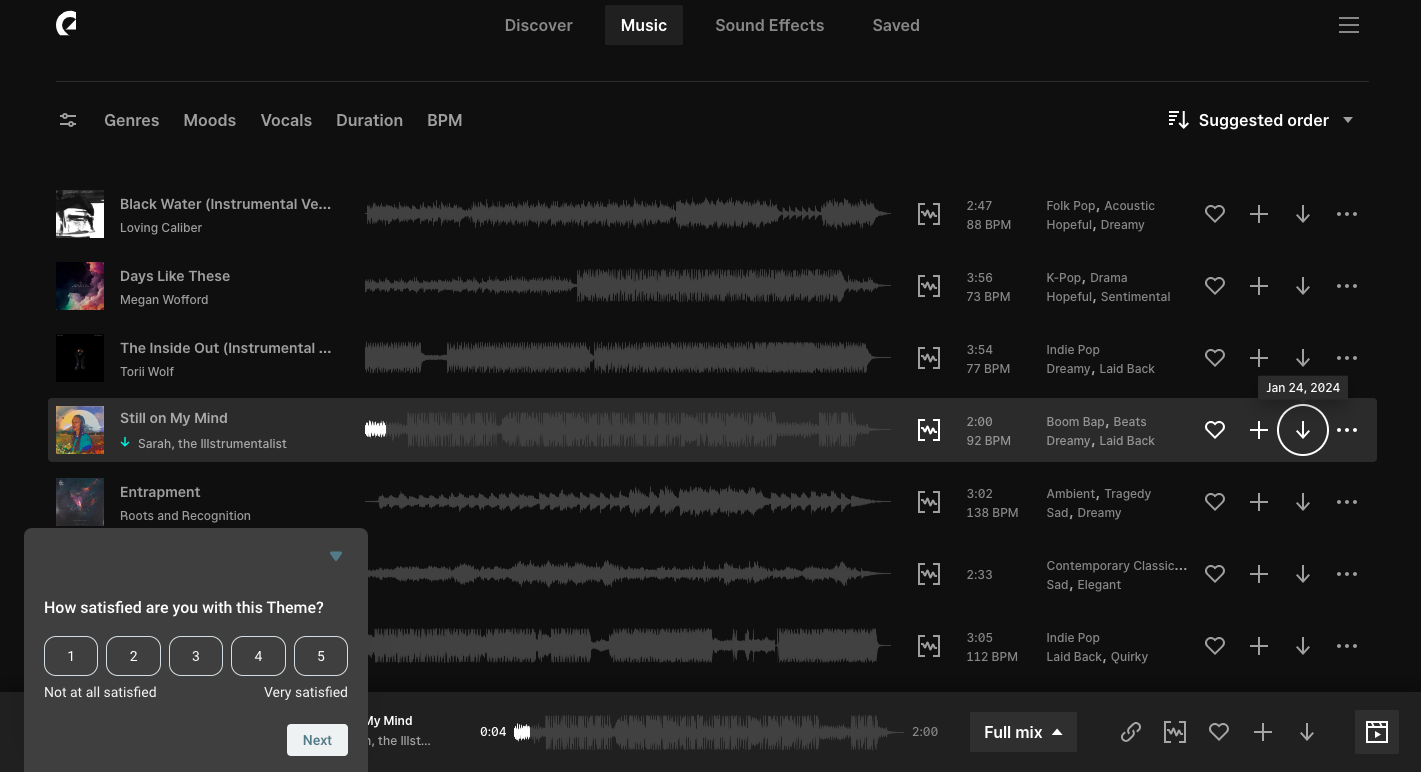 An NPS survey example from Epidemic Sound
An NPS survey example from Epidemic Sound
You can easily run an NPS survey with SendPulse’s pop-up builder. The platform offers a diverse range of adaptable templates for evaluating various survey parameters. Alongside the conventional 1 to 10 rating scale, you can choose from various presentation options such as stars, emojis, hearts, likes, and more. This flexibility will allow you to create tailored pop-up widgets suitable for different scenarios aligned with your webpage’s objectives.
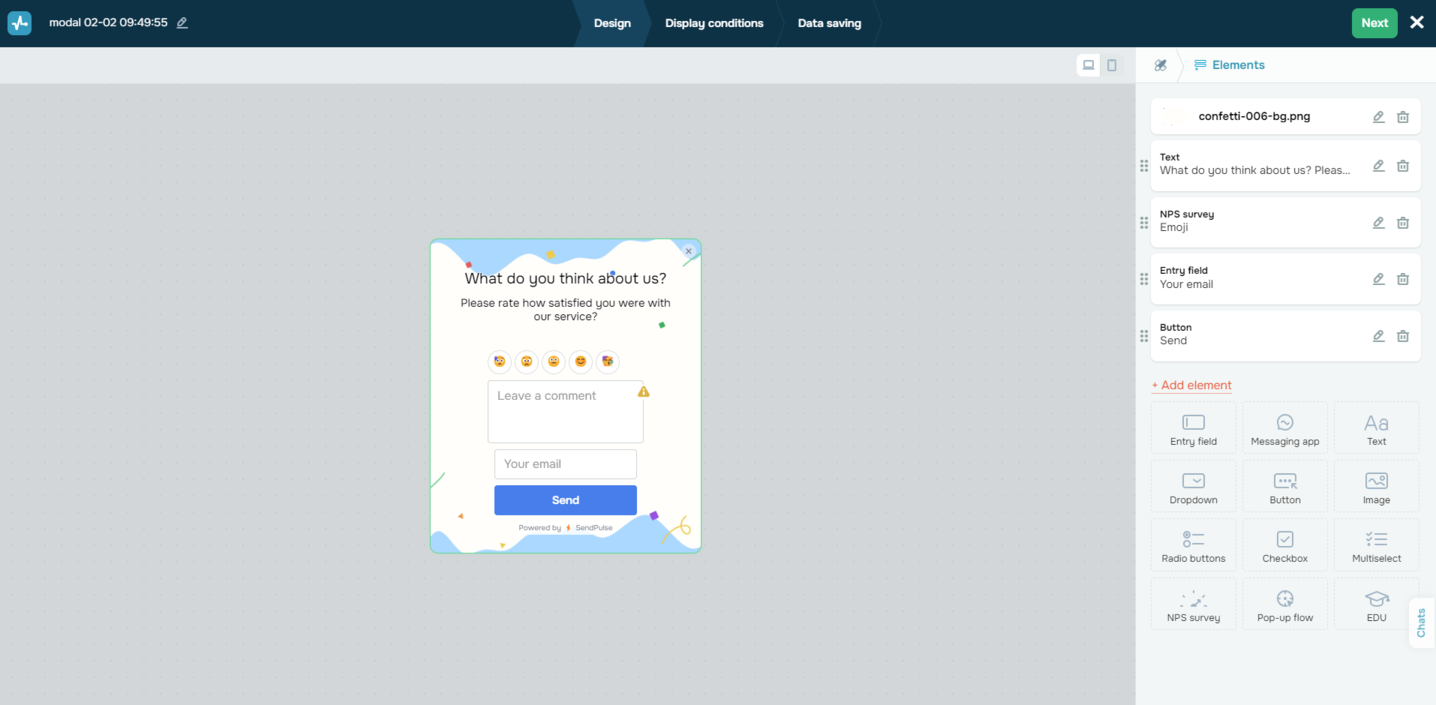 Creating an NPS survey in SendPulse
Creating an NPS survey in SendPulse
Support and interaction
To retain new customers, show them you care about them even after a purchase. For example, you can send some useful resources like how to use your product, where to ask questions, or where to interact with other users. If a client has registered with your service but has not used it, you might want to remind them about it or even offer some help. Try to do it politely and clearly. Otherwise, you might only annoy your customer.
Shift from reactive to proactive customer service models by anticipating any potential problems any issues and using a journey map to guide customers towards an exceptional experience.
SourceTake a look at the email below. People Data Labs sends a follow-up email to a customer with some useful links and resources. This approach ensures your customers have an easy start and get the most out of their new purchase.
Post-purchase bonuses
To retain customers and re-engage those who haven’t made any recent purchases, consider sending them a post-purchase bonus or discount code. This strategy can be extremely effective for boosting sales. For instance, you can share a promo code for their next purchase in your thank-you email.
To add urgency, you can mention that the code expires within a specific timeframe, which will encourage your customers to use it promptly. Take a look at how a well-known clothing store, Forever 21, offers an additional 30% discount to its existing customers and accompanies the coupon with a countdown timer.
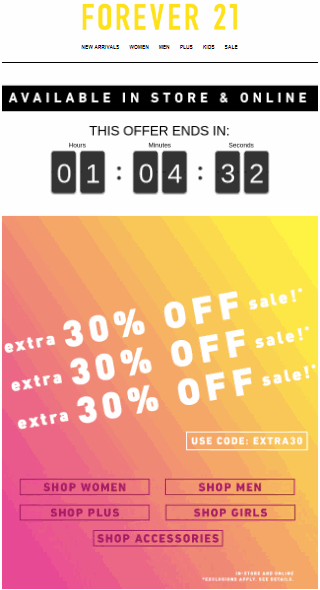 A post-purchase email containing a special offer
A post-purchase email containing a special offer
Another way to leverage post-purchase emails for eCommerce customer retention is to recommend related or complementary products based on the client’s purchase history. This can increase the average order value and expose customers to a broader range of your offerings. You can also share helpful information related to the purchased products. This can include usage tips, care instructions, or an overview of additional features.
Loyalty programs
Loyalty or reward programs are a system of bonuses and discounts for regular customers. They are intended to motivate customers to shop more frequently with a particular retailer and choose them over competitors in the future. Loyalty programs can be very simple, for example, points for a purchase, or more complex with increasing discounts and exclusive offers.
To set the foundation for customer loyalty, it’s crucial for companies to motivate customers to join their community. Your registered users shouldn’t start with an empty point balance. Consider granting them a predetermined amount of points, a registration discount, or any extra incentives to make a first purchase.
Here’s how Marriott uses this customer retention strategy. By inviting guests to become members, the hotel chain provides various benefits, including complimentary nights, discounted rates, and convenient mobile check-in. This encourages customers to choose Marriott wherever they travel, knowing they’ll enjoy exclusive perks during their stay.
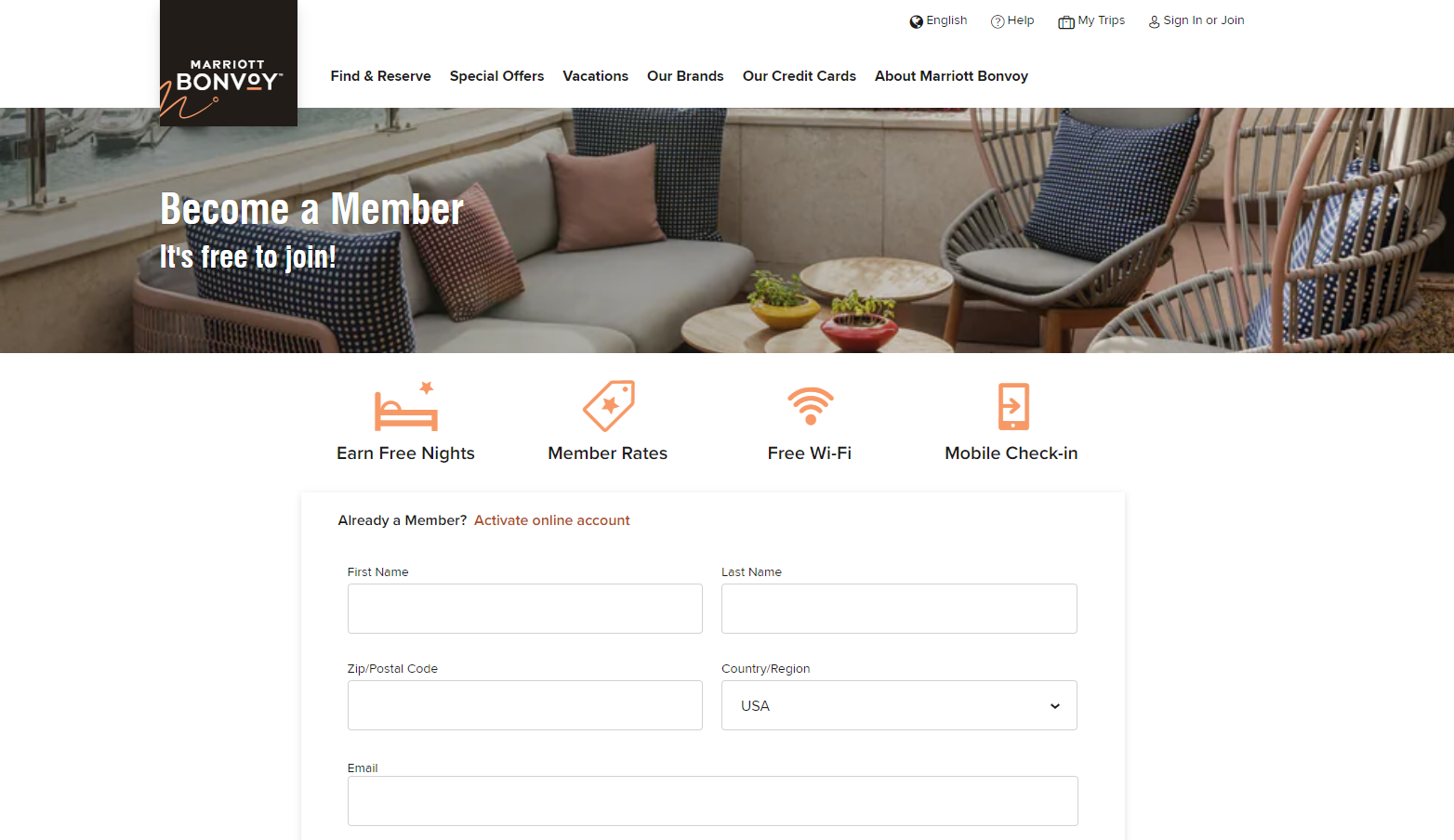 Marriott’s loyalty program
Marriott’s loyalty program
Also, for SaaS products, implementing a loyalty program can be an effective strategy to retain customers and foster long-term relationships. For instance, you can introduce a system where customers earn points for various activities, such as consistent usage, providing feedback, or referring friends. These points could then be redeemed for discounts, extended usage, or other perks.
Dropbox, a cloud storage and file-sharing platform, has offered a referral program where users can earn additional storage space by referring friends and colleagues to sign up for Dropbox. Such an approach is great for eCommerce customer retention because it rewards loyalty, enhances the user experience, and contributes to viral growth.
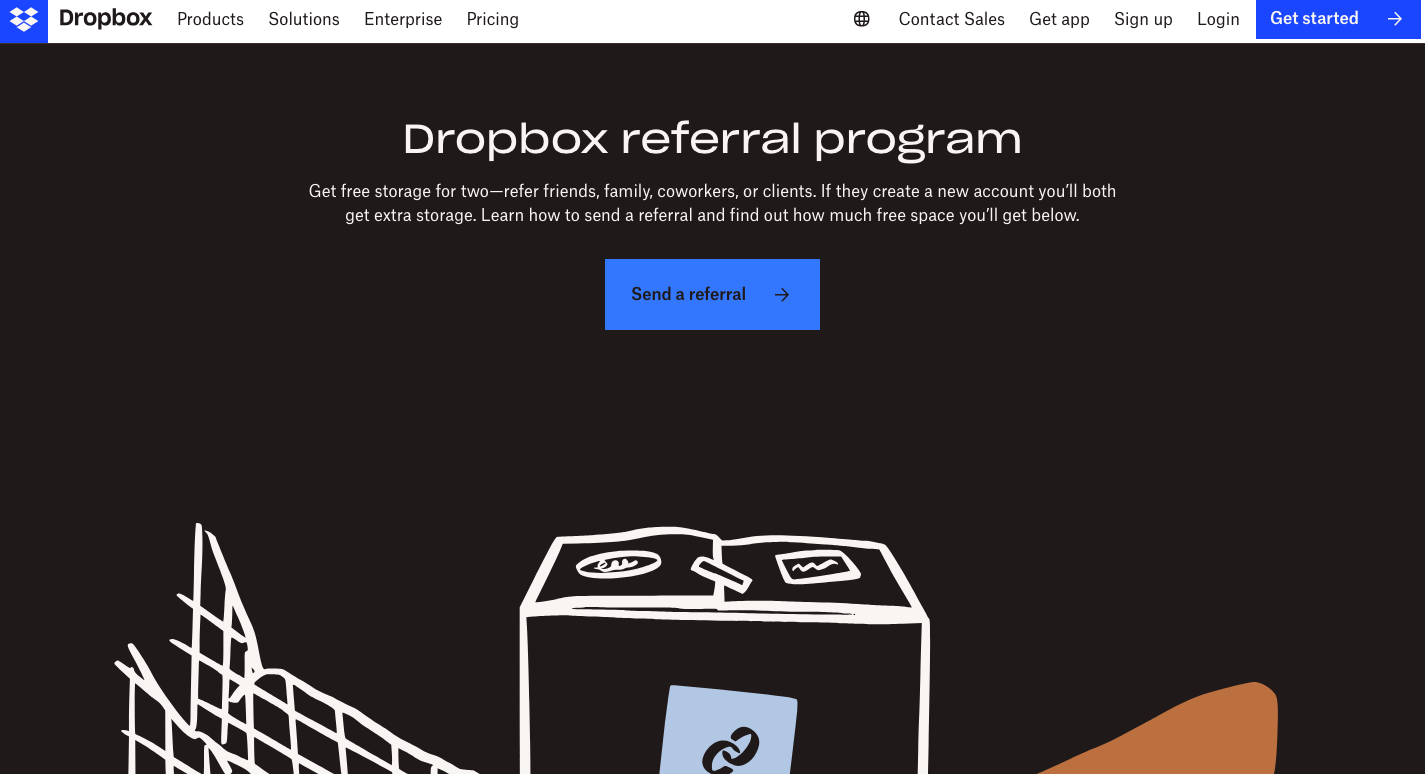 Dropbox’s referral program
Dropbox’s referral program
Email marketing
Besides thank-you emails and how-to guides, there are plenty of effective ways to leverage email marketing to boost eCommerce customer retention. You can promote products relevant to your subscribers, remind them of milestones and important events, send updates, etc. Instead of overwhelming your audience with continuous advertisements, consider personalizing your email content to make it attractive and valuable.
For instance, Airbnb created a highly personalized email to celebrate the host’s achievements. One can access a reel with hosting highlights and get a recap on something. Reminding customers of their progress and achievements is a great way to retain and motivate them to use the service even more.
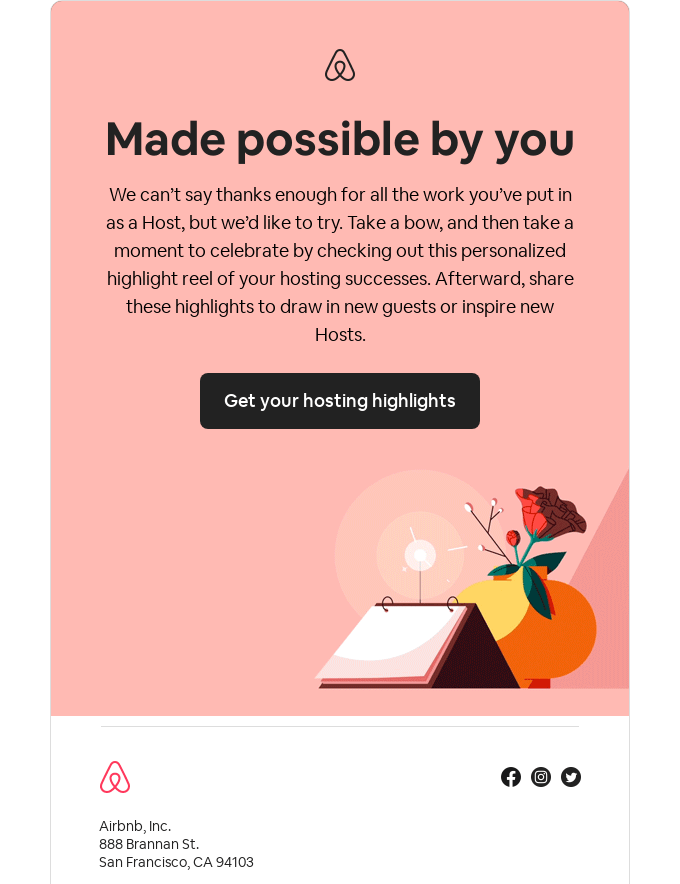 A personalized email from Airbnb; source: Really Good Emails
A personalized email from Airbnb; source: Really Good Emails
To be able to tailor your email marketing to individual customers, make sure to opt for a solution that allows this kind of functionality. With SendPulse, you can collect all the essential customer details and use them to create hyper-personalized automated messages. For instance, you can send curated product recommendation emails based on user behavior data and browsing history or launch email flows triggered by specific customer actions or time-based events.
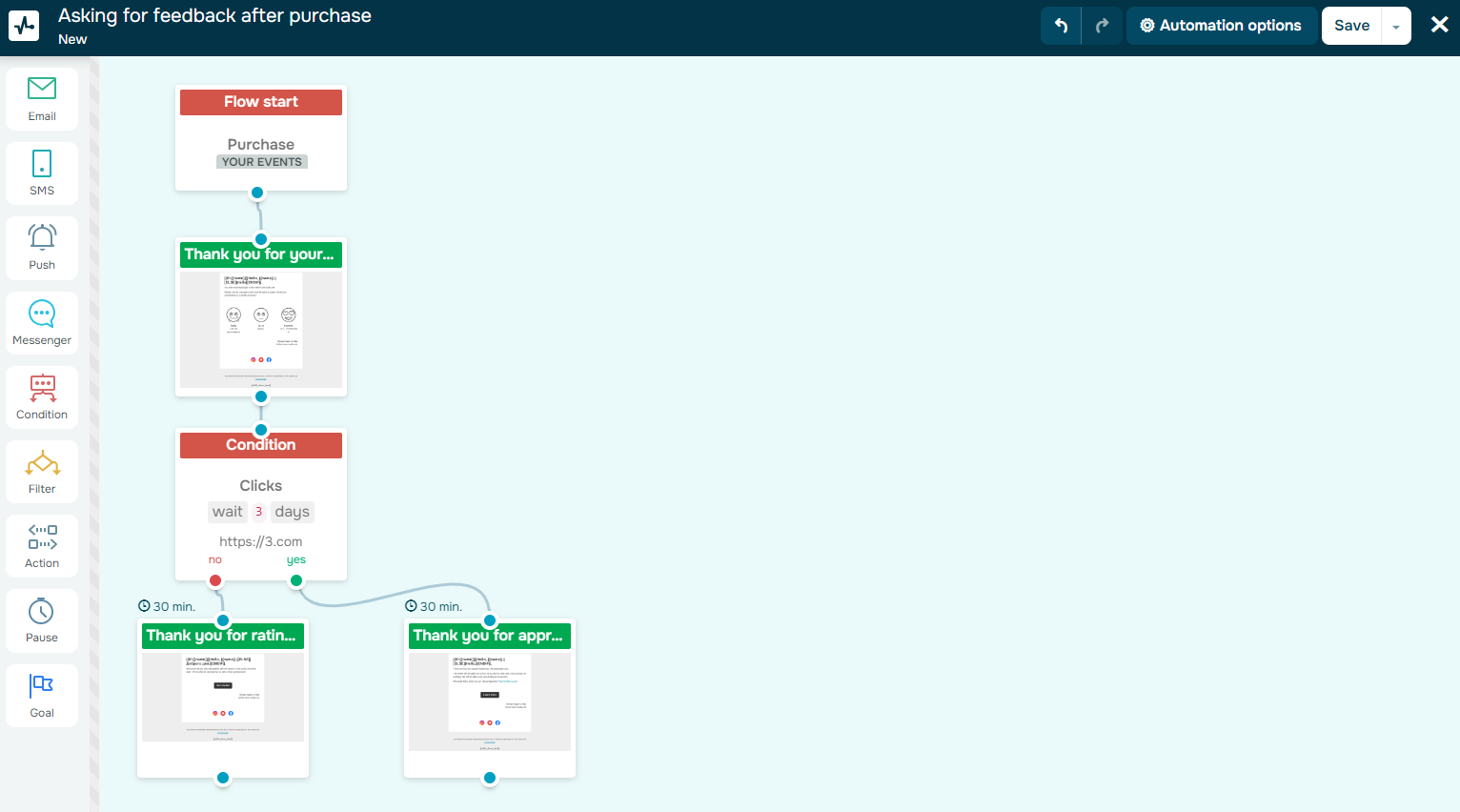 Creating an automated flow with SendPulse
Creating an automated flow with SendPulse
Social media marketing
The impact of social media on eCommerce customer retention can be huge, making a consistent social media presence crucial for brands to stand out. A thorough SMM strategy can help you significantly boost customer engagement and brand loyalty. Encourage customers to subscribe to your social media channels by incorporating social media buttons into your website and emails.
To keep your customers engaged, create posts that resonate with them. Entertain your followers with contests, giveaways, stories, memes, or interactive quizzes — it will help you keep them emotionally invested, active, and engaged with your brand. Depending on your business, it could also be beneficial to include expert insights to offer value and address any questions your audience may have.
Avoid taking long breaks between posts, as it can greatly reduce your rankings. The ideal publication frequency will depend on the specific social media platform. For instance, most brands share 2-3 Instagram per week, no more than 1-2 times per day. However, on TikTok, it’s recommended to post 1-4 times a day.
Here’s how UnderArmour uses Instagram to express gratitude to U.S. veterans and share their stories. Such posts feel personal and can often spark appreciation in the comments section.
 UnderArmor’s engaging post on Instagram
UnderArmor’s engaging post on Instagram
Make sure to respond to users’ comments and direct messages as much as possible, as this is where potential customers often seek product- or service-related information. The way you handle them can significantly boost or tarnish your sales figures. As your business gains more followers, keeping up with the increasing volume of customer queries can become challenging, and that’s where chatbots can come in handy. For instance, with SendPulse’s chatbot builder, you can automate your business’s communications across various social media platforms and messaging apps. All you need to do is create pre-defined rules and replies that will be triggered by user actions.
Customer retention strategy examples
As you can see from the previous sections, brands can retain customers in many ways. However, the best results are achieved when combining several of them. Let’s look at some customer retention examples from inspiring companies.
Allbirds
Allbirds employs different customer retention strategies to stay in touch and engage with their audience. The most prominent one is their email marketing campaign. Instead of sending a boring receipt, they treat their customers with a heartfelt thank-you email. Note how they add some insightful information about their production right below the order summary.
This company generally aims to craft useful and engaging emails and pack them with interesting product facts. This way, they reassure existing customers that it’s worth sticking around and investing their money in sustainable and cruelty-free fashion.
Allbirds’ referral program motivates existing customers to spread the good word about the brand. Just like that, both old and new customers benefit from a 15% discount.
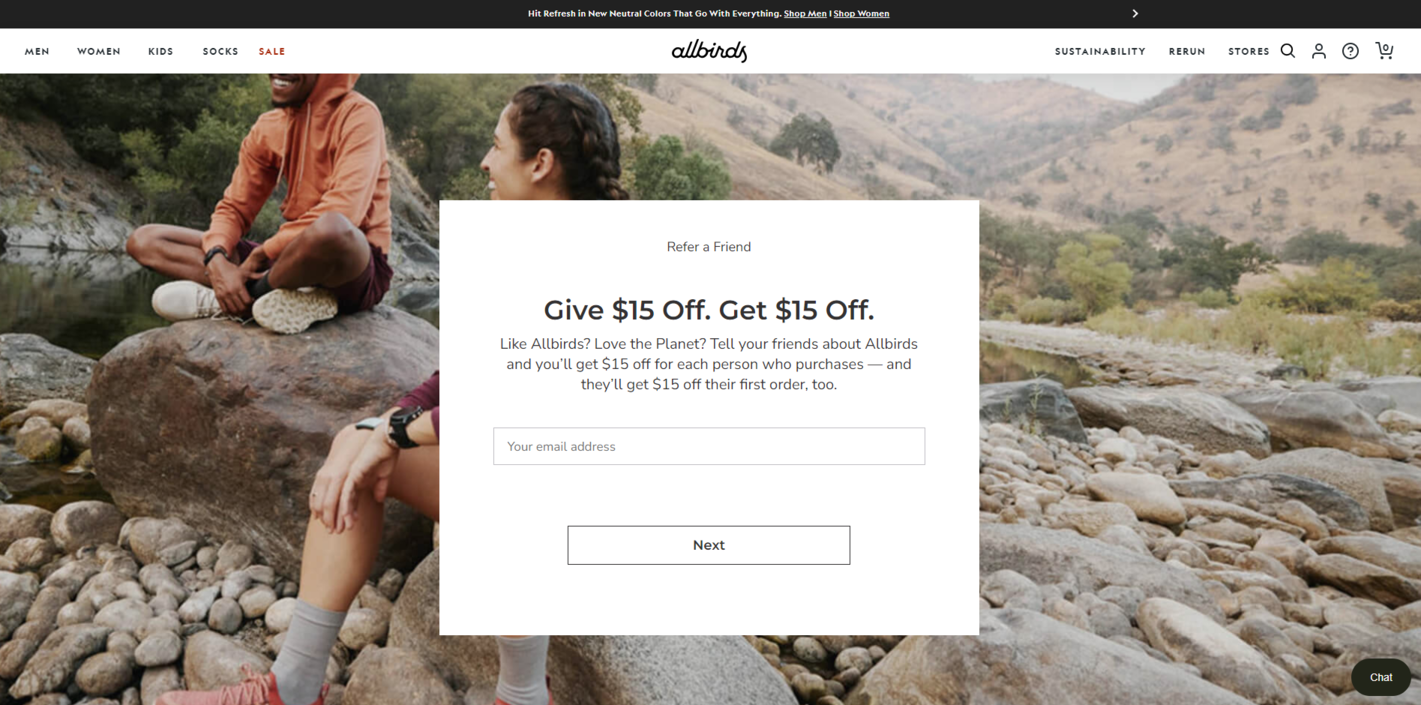 Allbirds’ referral program
Allbirds’ referral program
On top of it, Allbirds keeps all their social media profiles active. The combination of UGC videos and expert explanations on TikTok makes their content both relatable and insightful. This customer retention strategy lets users get style and outfit inspiration and, at the same time, learn fascinating facts from experts.
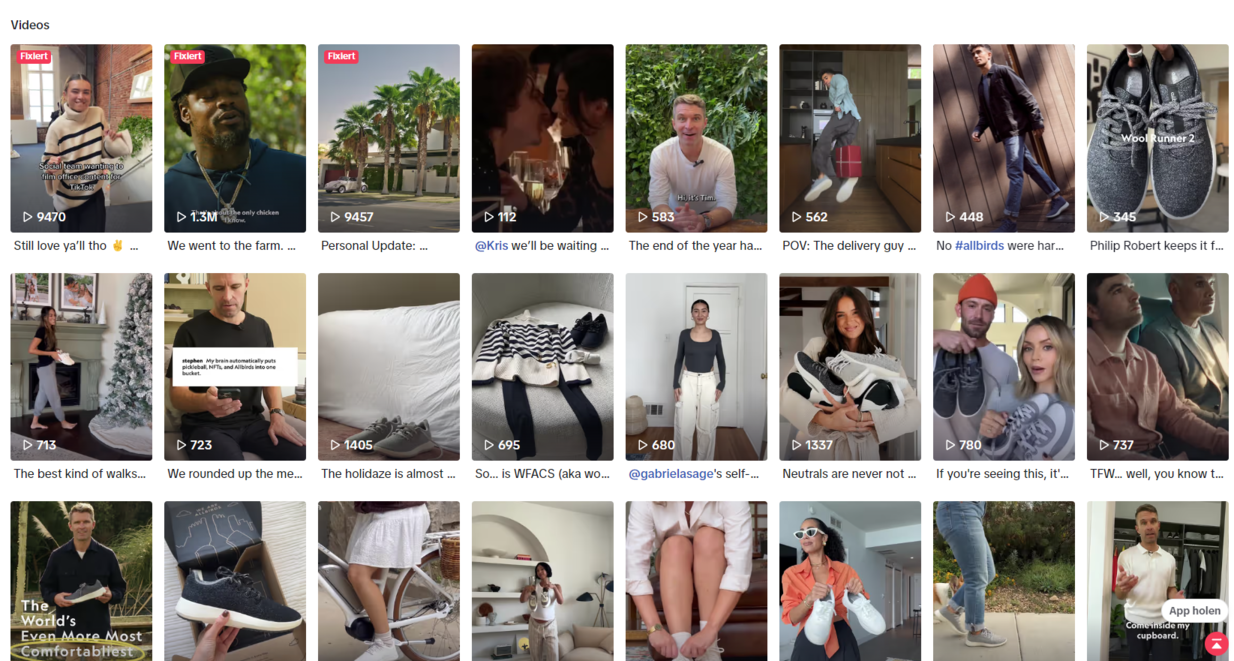 Allbirds on TikTok
Allbirds on TikTok
Starbucks
Let’s now examine a few excellent customer retention tactics from Starbucks. This coffee giant stands out among competitors through its effective customization, exceptional customer service, and robust loyalty reward program.
Starbucks continually introduces new products and limited-time offers to keep customers interested and excited about visiting their coffee shops, thus boosting customer engagement and retention. To stay in touch with their clients, Starbucks leverages effective email newsletters. For instance, they nudge their customers into choosing them by giving away freebies, like the red cup in the example below.
Besides, Starbucks expanded its squad of loyal customers when it introduced its Starbucks app. Within the app, people have access to the company’s loyalty program, Starbucks Rewards. Customers earn stars for each purchase and can later redeem them for free drinks and food. This incentivizes repeat visits and encourages loyalty.
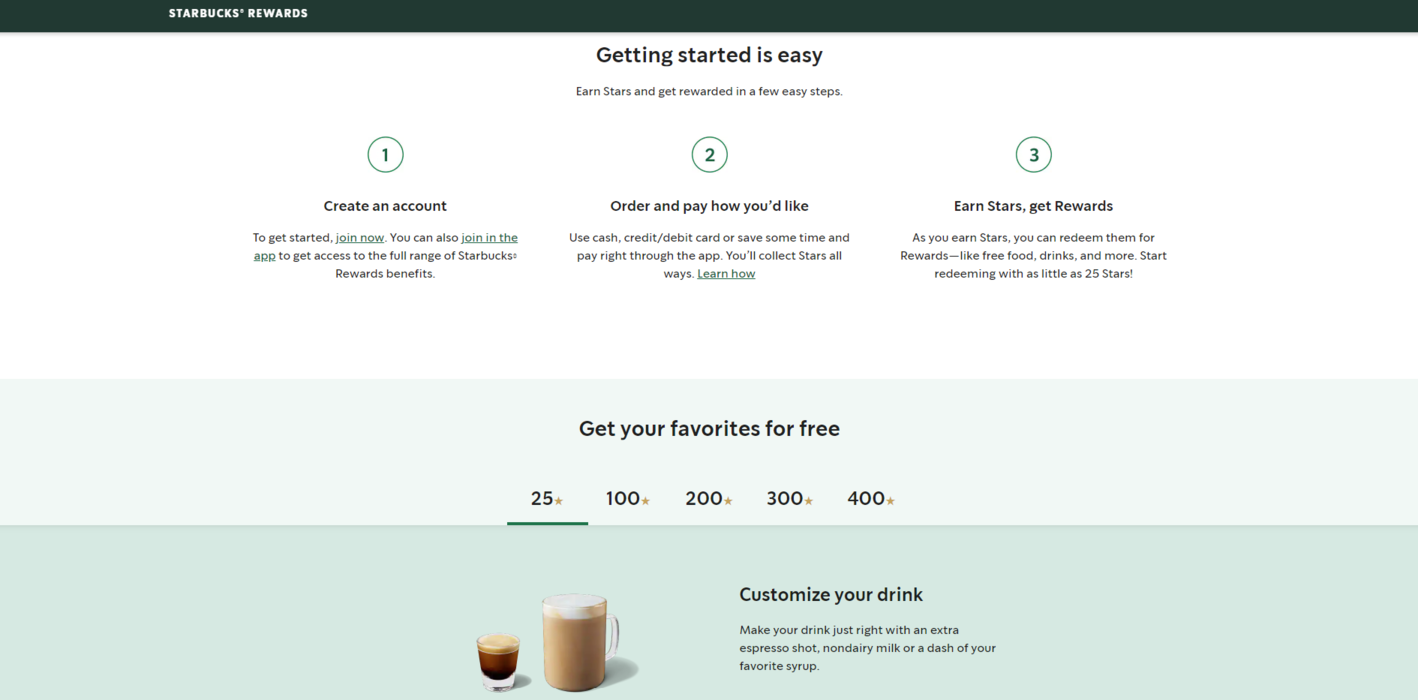 Starbucks reward program to retain customers
Starbucks reward program to retain customers
Social media plays a crucial role in Starbucks’ customer retention strategy, too. The company encourages customers to share their experiences and photos on social media using specific hashtags. This user-generated content serves as free promotion, and by featuring customer photos on Instagram feed, Starbucks fosters a sense of community around its brand.
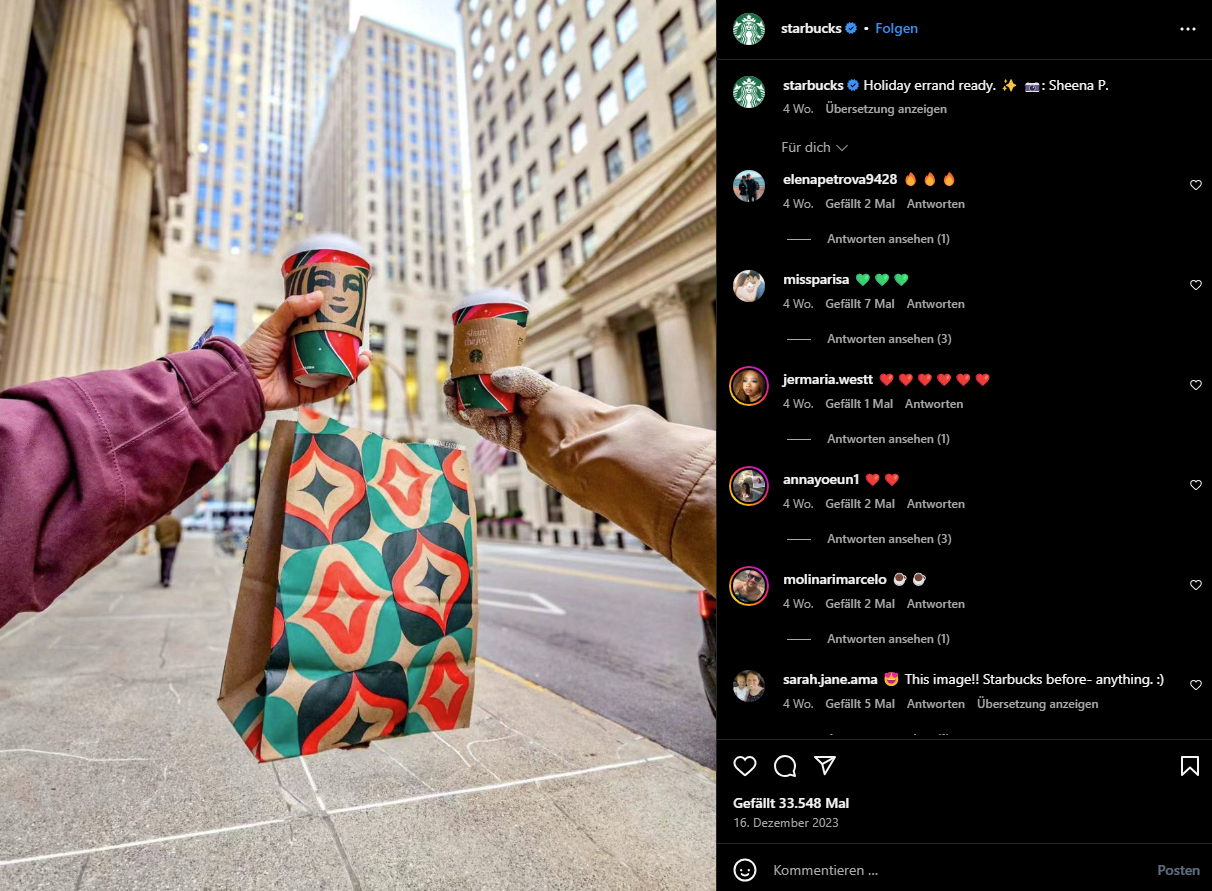 An example of a user-generated post shared on the Starbucks feed
An example of a user-generated post shared on the Starbucks feed
Netflix
Netflix uses sophisticated algorithms to analyze viewing habits and provide personalized content recommendations. This helps their subscribers discover new shows and movies tailored to their preferences, enhancing the overall user experience. To make sure that a viewer enjoys a specific show, Netflix sends email surveys asking a person to rate it. This approach helps Netflix make more relevant suggestions in the future, thus effectively retaining its customers.
Netflix also sends service-related updates and notifications via email. This ensures that its customer base stays in the know about all the features and new possibilities. The company also makes sure that its users have a better experience by utilizing all the available features and have fewer reasons to switch to another streaming service. As in the example below, viewers receive an email containing useful information about parental control with some links to customize controls.
Final thoughts
Retaining customers is an ongoing process that requires attention and adaptation as your product and user list evolve. It’s essential to regularly analyze data, monitor user behavior, and adjust your strategies accordingly to ensure effectiveness. By testing out different customer retention strategies mentioned in this post, you can determine which one works best for you. Leveraging multiple channels for communication, such as social media, email, and in-app messaging, ensures that you reach users through their preferred platforms and devices.
With platforms like SendPulse, you get advanced customer communication tools, from targeted email campaigns to messenger chatbots and website live chats, to build stronger relationships with your audience. The best thing is you can start absolutely for free. Give it a try today!